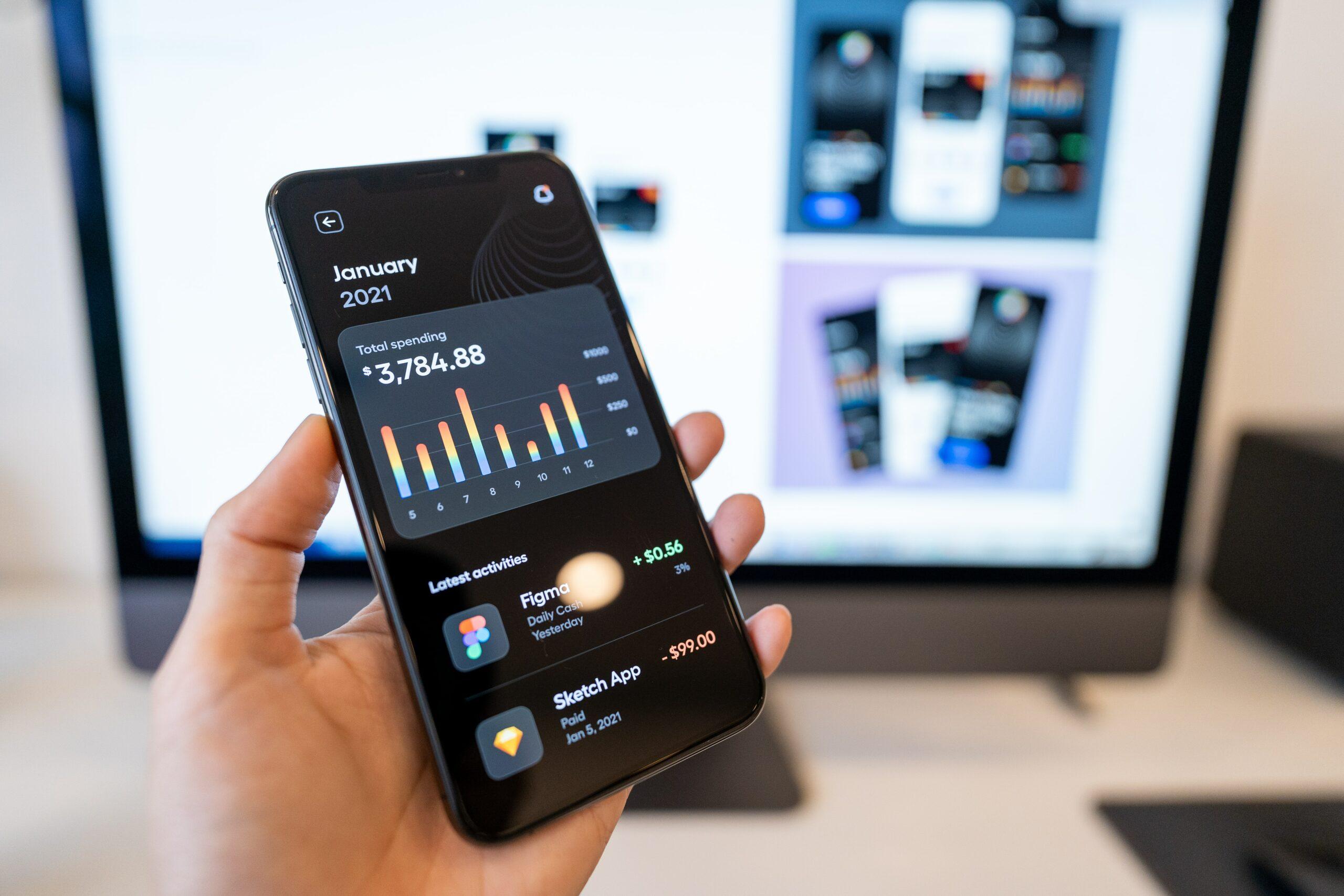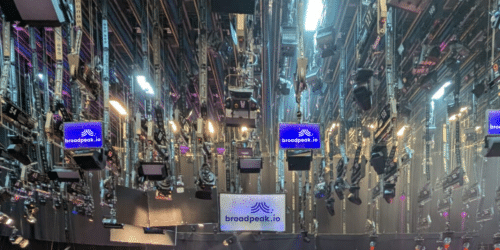Olivier Karra, SaaS Solutions Director at Broadpeak, had a discussion with Ophélie Boucaud from Dataxis about “How to get the best value out of your ad impressions” during the Nextv AD Europe the 31st of May 2022.
Here you have the different topics discussed during the talk:
- How to monetize your ad inventory whether in control of your app or not?
- Optimum strategy for combining fast TTM and trusted impressions reporting
- Best of breed approach: leveraging server side and client side ad tracking
Watch the session here:
Or read its transcription here:
Ophélie Boucaud:
Hi, and welcome back for the second session of the day. I am right now with Olivier Karra from Broadpeak, who’s a sponsor for this event. He’s the cloud solution marketing director, and he will be presenting how to get the best value out of your ad impressions. So this is a 20-minute session. And we can also answer questions during the presentation. So please feel free to drop your questions or remarks in the chat box. The presentation is also being recorded and will be available soon on our platform. So I’m going to let Olivier discuss the structure of ad-serving solutions. The interest of this session is that we are trying to assess what are the best technical choices when it comes ad insertion and ad-tracking tools. Olivier will be vocalizing and making technical terms more accessible so that we all understand what’s behind the acronyms.
For example, what does client side or server side means completely? So we have content providers with us today, which will be able to assess what technical capabilities are the best to implement depending on their strategies and their needs. Also, depending on whether they’re in control or not of the content delivery infrastructure. Olivier will also share some insights to improve time to market for new entrants. And for content providers, what are the solutions that they can choose based on what’s currently available in the market? So without further ado, Olivier, you can have the floor.
Olivier Karra:
Thank you very much, Ophélie. Good morning, everyone. Very pleased to be on this session. So maybe I can quickly introduce myself before we start. My name is Olivier Karra. I’m cloud solution marketing director. I’m mainly looking after SaaS and cloud solutions, ensuring that our technology really fits with market demands but also meets business requirements. So this is really my main responsibility, but I’m also ensuring that we, our technology and our solutions fit within the wider end-to-end ecosystems with the relevant ecosystem partners.
Before we start, maybe for those of you who do not know Broadpeak, I can just say a few words. Broadpeak is a technology provider delivering a streaming technology to content providers and operators. We have our technology deployed at more than 120 customers worldwide. We have a streaming capacity of more than 20 terabit per second altogether across all our customers deployed globally.
Maybe I think if there is one number to keep in mind, it’s the fact that today, Broadpeak technology basically enables streaming for more than 200 million subscribers or viewers. And this number is increasing every day. And maybe just to wrap it up in terms of introduction, if there is one thing also to keep in mind that I can share with the audience here is that Broadpeak mission statement is really to empower video service providers so that they can offer the content that people love to watch with the best experience, the most compelling experience. I hope this shed some light on who brought Broadpeak is and what we do just as an introduction. So as you said the idea I had for this session is really share some of the approaches and strategies that content providers and publishers can go for and in which context they can choose those different approaches.
But before we dive into that kind of discussion, I just wanted to give a very high-level perspective of the options that are available today in the market. Let me share my first slide here. This is a very simplified overview of the main approaches that anyone can go forward. And at some point in time, that kind of option is going to have an impact on the way you monetize your inventory or your content. And you can see here that there are really two sides, the server side and the client side. And this is showing already what is available in the industry in terms of doing dynamic ad insertion or dynamic ad replacement but the one theme that I’m going to focus on today in this session a bit further is on the ad tracking side. You can see that this is also something that can be done either upstream of the client in this case, it’s really the server side that we call and it’s called server-side ad tracking, or it can be done directly on the player on the device itself.
“Both server side ad tracking and client side ad tracking can be leveraged even if you do server side ad insertion“
And this is then the clients that are tracking. And here, I’m just showing those basic four options. But in fact, you can stack them up and consider server and client-side approaches for other dimensions, other features or other capabilities. So that’s really the high-level introduction. Maybe I think before we go further into the two options I wanted to briefly share a high-level overview of what a typical server side ad insertion solution looks like. You can see here on the bottom, the video data plane, where the content is being streamed. And the server here is basically in between the ad decisioning service and the OTT platform, delivering targeted ads with the relevant preparation and the targeted manifests for each end-user each session. Now, the interesting thing here is that you can see that both server side ad tracking and client side ad tracking can be leveraged even if you do server side ad insertion. I think this is probably the first message I wanted to highlight here. And we are going to go further into this discussion. Is that depending on what stage or what part of the life cycle you are in and your profile, you may want to leverage one approach versus the other. They each have their benefits and you’re going to see in a minute what is most relevant in terms of value proposition depending on the use cases.
So maybe the right time to go a bit deeper now into those two options. I think one interesting way to compare those two ad tracking options is to see what capabilities and what features they really provide to anyone doing targeted advertisement. And you can see here on the left, all the capabilities that you can get typically by doing server side ad insertion, whereas on the right side, you see the ones that you get doing client-side ad insertion. I think the most important and the most obvious benefit that you get away with by doing server side ad tracking is the fact that there is no integration needed on the client devices on the application that you’re using, which is something extremely valuable from a time-to-market standpoint. And depending on the number of devices and apps that you want to stream your content to, this is kind of making a quite a significant difference.
And the other benefit that you get away with is that there is no constraint from this client environment standpoint. Now if you move to the client side, of course you were going to have to do this integration but then specific benefits that you get is that you have much more accurate metrics in terms of ad tracking and analytics that are being reported to the ad tracking service. So I think you start maybe seeing the differences between one and the other is that in one case, you can go to market on a fast track with a metrics estimate and high-level impression analytics, whether on the client-side approach, you have much more accurate analytics but there is minimum integration needed on the client devices.
You can see here that the client side also has some interesting benefits from ad-tracking standpoint because you have some unique capabilities that give you much more insight from that perspective. So if we try to translate some of those benefits in a simplified way, of course, the server side ad tracking is very interesting because you can quickly go to market. There is no initial effort needed. And this is extremely useful if you want to have, for instance, first view on how the service is going to be effective on the market and how much return on investment you can expect from that kind of approach.
Again, no client, no device dependency. Now, if you look on the client-side ad tracking, you have much more insight into the impressions that are being made. And I think when you have business discussions with the rest of the ecosystem, whether there are SSP platforms or ad decisioning services, I think this gives you real insight into the impressions that are being done and much more information that you can value and leverage that also gives you much more insight into the trends, into the way the impressions are being made. And there is a whole universe of information that is accessible, which is a bit more challenging to have access to on the server side.
But at this stage, maybe the second message I want to share here with the audience is the fact that those two approaches are really complimentary to each other. They’re not exclusive to each other and leveraging both is something that we believe is a best-of-breed approach because it gives you the ability to leverage both benefits depending on where you stand within the life cycle of your services. So I think this is really the first part that I wanted to share at this stage, making it obvious for the audience.
Ophélie Boucaud:
And if we dive a little bit more into concrete examples of how all the solutions can be applied depending on the type of factors you’re talking with, the type of clients and their different needs.
Olivier Karra:
Right. So I think this is probably the right approach now to make it a bit more concrete, depending on what use case we have in front of us, decide what is the best strategy to leverage? So let me share this slide where you can see different use cases that we’re going to go through and basically make recommendation best suiting each profile. So first use case, let’s assume I’m a new entrant. I have content that I would like to monetize, and I’m trying to quickly assess whether doing ad targeting is going to be profitable. And if such is the case, to what extent is going to be profitable. So in this case, what I want to avoid is spending cycles and efforts doing integration on client devices, applications, even if that’s something very relevant for the medium term, my immediate concern is really to figure out whether I can make business out of this approach.
And in this case, I think it’s pretty obvious that using a server-side ad tracking is really a natural fit to this situation because you immediately get the kind of answer and trends that you’re looking for without having any dependency to the client side effort that is going to be needed at some point. So I think this is a first interesting use case that I simplified a little bit, but on purpose really to make it obvious. Now there is a second interesting use case that I wanted to share is the one of indirect distribution. So let’s say I’m a content provider but I’m not directly publishing my content, I’m going through indirect distribution. So it could be a connected TV portal. It could be an aggregator. It could be any indirect distribution approach.
And the challenge in this case is that I’m going to set up a business relationship with the publisher, which is going to provide impression metrics but I do not really have access to how these metrics are being computed and reported. So, of course, there is something that is going to be established and agreed upon but I think from a content provider standpoint, there is value here in checking what impressions are being made and in what conditions even without having access to the end-user devices and the end user applications. So here, the benefit of server side ad tracking is really to give more confidence to the content providers and giving them a mean, giving them a tool to double-check the metrics that are being reported by the publisher.
“The idea here is to meet the demands coming from advertisers”
I think it’s an extra mean that is intended to add more trust or more confidence without exclusively relying upon whatever KPIs are being reported by the publisher. And maybe to finish this series, I think it makes really sense to now address the use case of someone who is really advanced into this type of service who has premium content and who is already doing targeted advertising. In this case, I think it really makes sense to go client side, of course, but the idea here is to go one step further in terms of what metrics are being reported, in terms of consistency, in terms of accuracy, in terms of trust level. And the idea here is to meet the demands coming from advertisers. I think the advertisers are at the root of the money flow in this ecosystem.
They’re the ones really who invest in the chain altogether. And we can see that for premium inventory, for premium demand. There is a counter side expectation is that you have to provide all the insights with the sufficient level of accuracy of how the impressions are being made, in what context the impressions are being made, and so on and so forth. And this is really my takeaway message here in this case. This is a typical environment where leveraging the open measurement approach that has been enabled by the IAB really makes sense because this is something that can be added on the client side in a very seamless way. We’re just talking about an SDK integration and it’s really going to provide the level of visibility and trust that advertisers are looking for either directly or through even independent measurement companies that some advertisers may leverage to get the level of trust they demand at the end of the day.
So, just a few examples. There are, of course, many more use cases, but I’m just trying to share that leveraging server side ad tracking and client side ad tracking is really a good approach. And having those two options in mind really brings a value and benefit depending on what use case you are in and what stage of your deployment you are in.
Ophélie Boucaud:
Thank you very much, Olivier. So basically, there’s no one-side-fits-all. You can really navigate through the different solutions also depending on where you are in terms of business models. And this is a… Technical solutions are evolving with you, basically.
Olivier Karra:
Pretty much.
Ophélie Boucaud:
So we can still take a few questions from the audience, but meanwhile, I would have one question: what are the innovations that you see coming in terms of dynamic ad insertion on the market?
Olivier Karra:
So in terms of what we see on the horizon in terms of innovation, there are a couple of capabilities that are going to have to answer pain points that we hear back from the market. The first one is that as soon as we move into programmatic, there is a lack of confidence. And one way to overcome this challenge, this risk is to automate the ad creative check as they are being prepared. So that’s really something that the technology offers today. And typically, we’re talking about checking the quality of an ad creative, checking the content even, and making sure that if the minimum level is acceptable, this goes into the flow, this goes into the chain, otherwise, it’s just rejected and it moves to the next option.
So this is typically one, one thing that we see in the innovation arena. Maybe the second type of future capability that we see coming is maybe potentially the ability to do watermarking on ad creatives, making sure that whatever ad is being impressed on the client side, for instance, is certified with watermarking information, giving again, the trust level that advertisers are looking for. Again, this technology is available on the market. I don’t think it’s widely deployed but this is typically something that can enhance, again, the trust level and the need that advertisers are looking for.
Ophélie Boucaud:
Thank you very much, Olivier, for all your insights. It’s time to wrap up this session. Stay with us because we are coming back in a few minutes with the session on addressable TV for pay TV operators. We will have two sponsors on the sessions and they will be talking with speakers from Sky, Liberty Global, and United Group. Thank you very much, Olivier, for your time.
Olivier Karra:
Thank you, Ophélie. Much appreciated. Thank you for having us on the session today.
Photo by Tran Mau Tri Tam on Unsplash










